In a previous post, I described touring Fort Matanzas, which protected St. Augustine’s back door. However, no visit to St. Augustine is complete without touring Castillo de San Marcos. Built over 450 years ago by the Spaniards, the Castillo is the oldest stone fortification in the US.
The Spanish Period
The 20-acre fort, with 30-foot high coquina walls, fronts Matanzas Bay just north of St. Augustine’s city center. Although Pedro Menendez de Aviles founded the city in 1565, construction didn’t begin until over a century later in 1672. Fortunately, construction finished just in time to protect the city from future attacks.
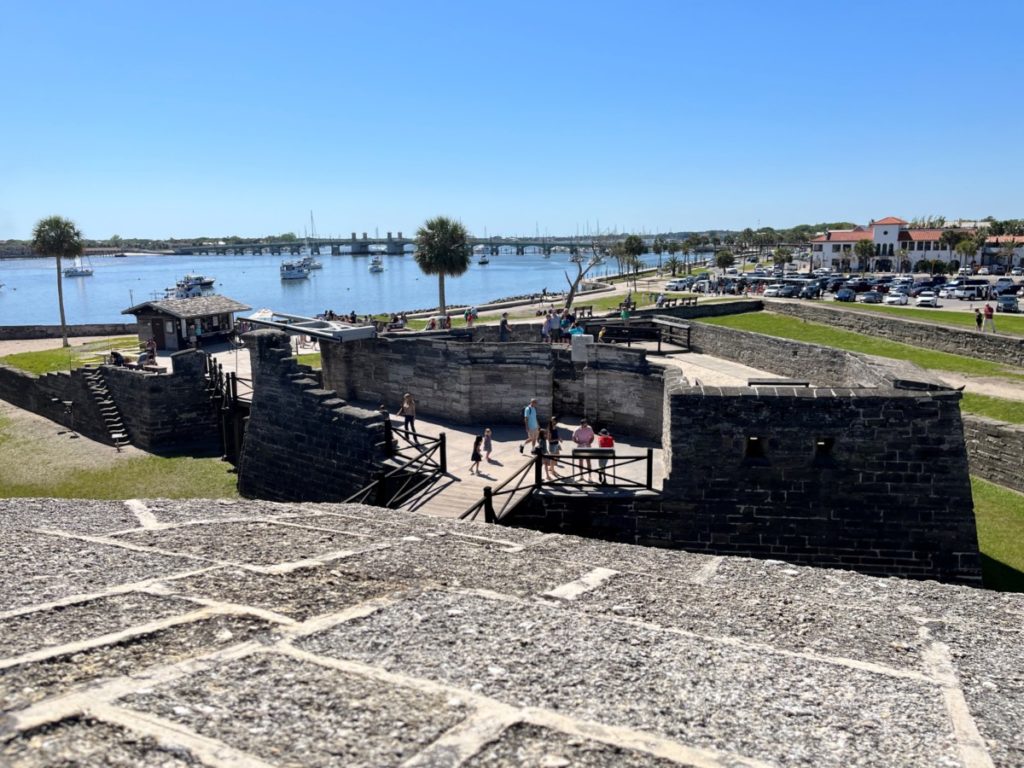
The Siege of 1702
In 1702, England declared war against Spain and France. Over in the colonies, Carolina Governor James Moore feared Charleston would be attacked by the Spanish since it was only a week’s boat ride from St. Augustine. He preemptively attacked St. Augustine in November 1702.
In preparation for an impending attack, 1,500 citizens sought refuge in the Castillo for over 50 days. Because coquina (crushed shells that were brought over from Anastasia Island) is a porous material, the Castillo’s walls (10-14 feet at the base) absorbed the brunt of the English cannon fire. With ample supplies, the Spanish held on until reinforcements from Havana arrived shortly after Christmas Day.
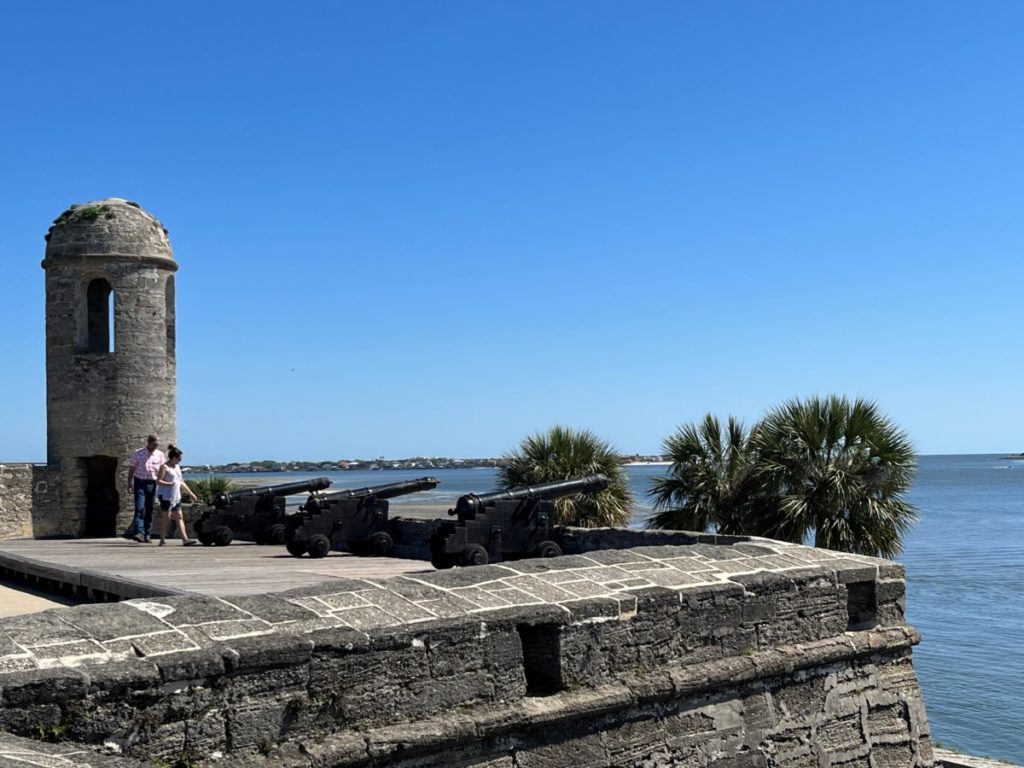
The Siege of 1740
In the 1730s, the British settled into the Savannah area, much closer to Spanish territory. Georgia Governor James Oglethorpe led an attack on St. Augustine in 1740. Once again, the coquina walls absorbed the cannon fire and Oglethorpe left after 38 days. A couple of years later, Spain unsuccessfully tried to attack the British at the Battle of Bloody Marsh at Fort Frederica in 1742.
English, Spanish, and US Years
At the end of the French and Indian War, England took over East Florida and many Spanish left the area. The British used Fort St. Mark (as they called it) as a stronghold during the Revolutionary War. However, with the Treaty of Paris in 1784, England gave Florida back to the Spanish in exchange for the Bahamas.
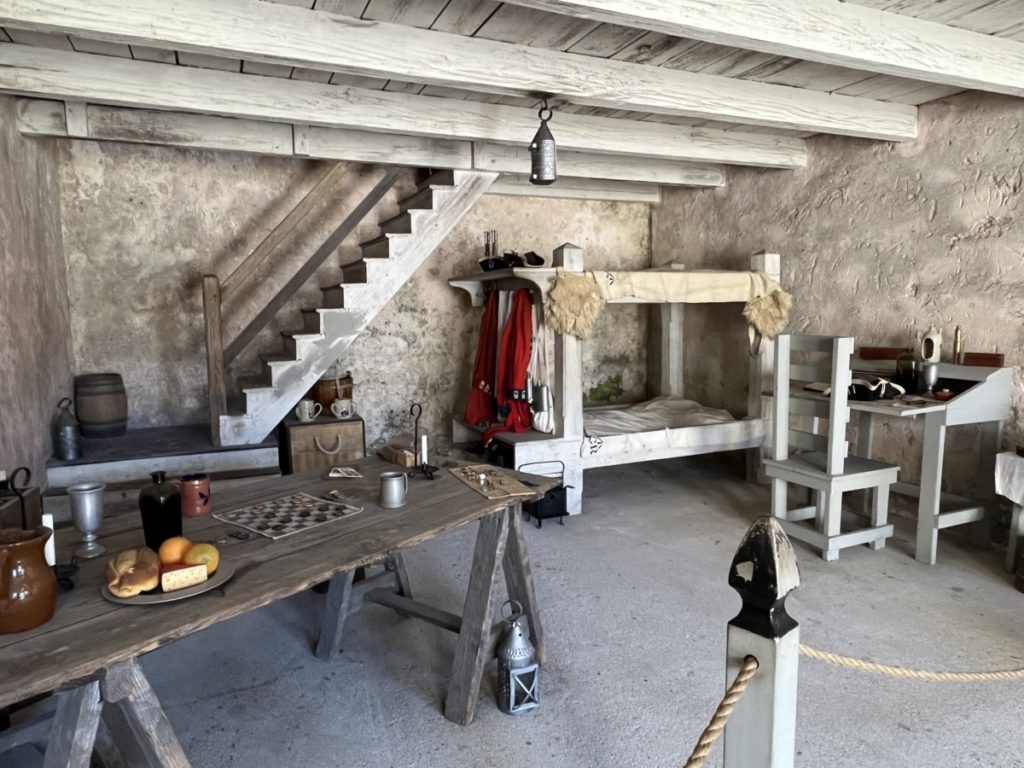
In 1821, the US acquired Florida and renamed the structure Fort Marion. During the Second Seminole Wars, the fort imprisoned over 230 Native American Indians including their leader, Oceola. Legend has it that one of the prisoners, Wild Cat, escaped with 19 other men. According to the NPS, most members of the Seminole Tribe today trace their lineage back to one of these men.
During the Civil War, the fort changed hands briefly to the Confederacy until the Union took it over in 1862. Later in 1875, the fort imprisoned Native American Indians from the Great Plains and later, members of the Apache Tribe. No longer considered a necessary reinforcement, the US government transferred the fort to the NPS in 1933.
Touring the Castillo
With an entrance fee of $15 per adult or a National Park Service annual pass, visitors can tour the Castillo every day except Thanksgiving and Christmas Day. The first thing to notice is the now-empty 42-foot moat leading to the main entrance with two drawbridges and a large portcullis (gate). Unlike modern times with automatic windows and doors, it took three soldiers over 15 minutes to close one of the 1,800-pound drawbridges.

Inside the Castillo
After walking through a long Sally Port (remember the base of the walls were 10 to 14 feet long), a grassy courtyard greets tourists. From here, rooms (or casemates) went off of the courtyard in the fort outfitted with four bastions at each corner.
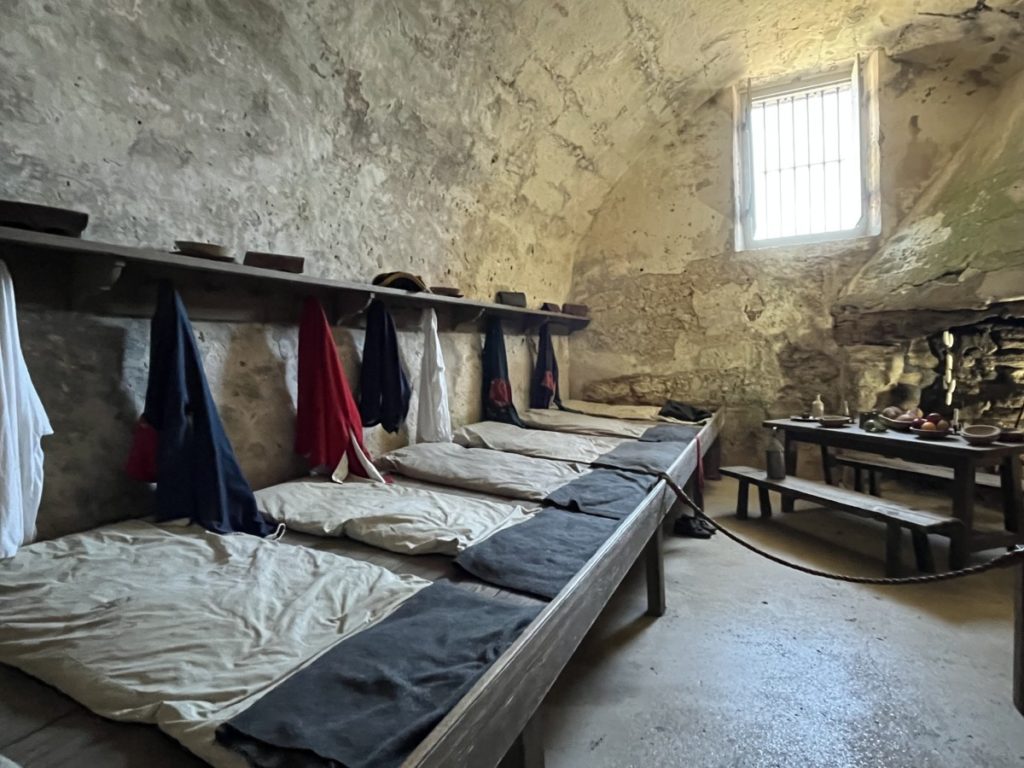
The first room on view served as a rest area for the guards. Unlike Fort Matanzas where soldiers were stationed for 30-day shifts, most soldiers at the Castillo lived in the town. However, soldiers would use this room for resting, eating, and socializing while on duty.
Remember how the Spanish outlasted the English during the Siege of 1702 and the Siege of 1740? One reason was the absorption of cannons by the coquina walls. In fact, only the Castillo and Fort Matanzas just14 miles south used coquina as the building material for a fort. The second reason the Spanish resisted the English was due to the provisions they stored in the western casemates.
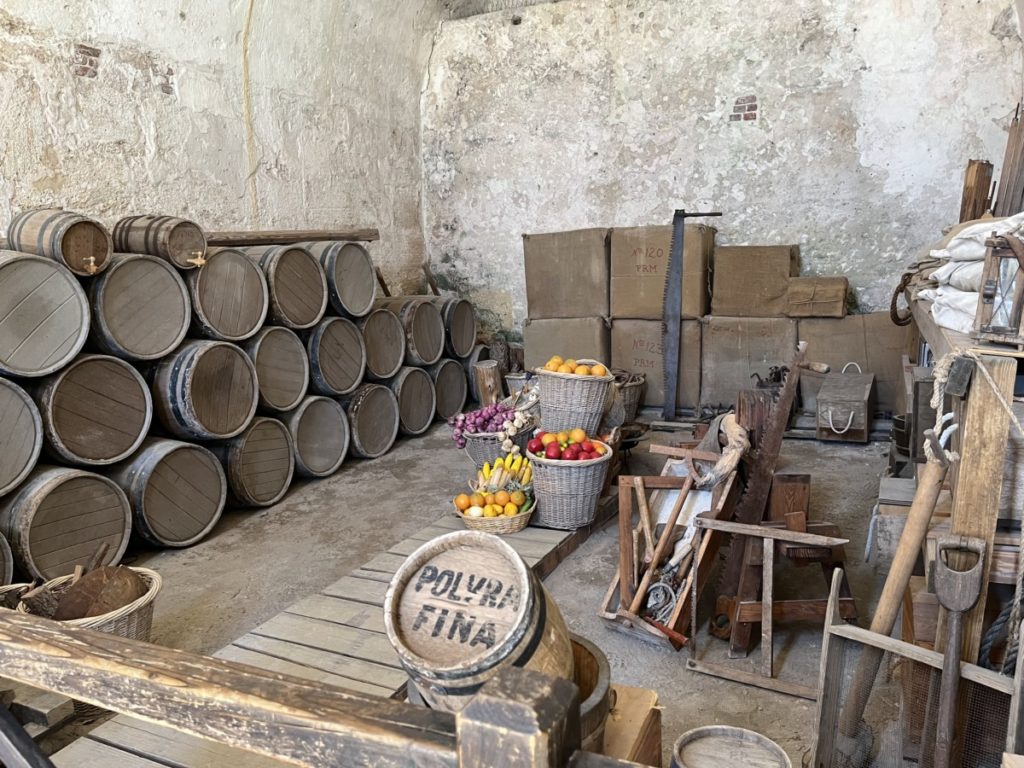
Other rooms to visit included the chapel, prison, and the treasury. Several casemates depict different periods of occupation by the British, US, and the Second Spanish Period.
Before heading upstairs to the gundeck, I walked around the courtyard. Although grassy now, the area was mostly dirt as soldiers practiced musket drills frequently. Although much larger than Fort Matanzas, it’s hard to imagine the 1,500 citizens residing here during the Siege of 1702. The courtyard also had three wells for drinking water, one of which still contains freshwater. Not to forget necessary functions, the southeast corner of the fort housed the “tidal toilet” or latrines. It’s actually a pretty clever design as the twice-daily tides flushed waste out to the bay.
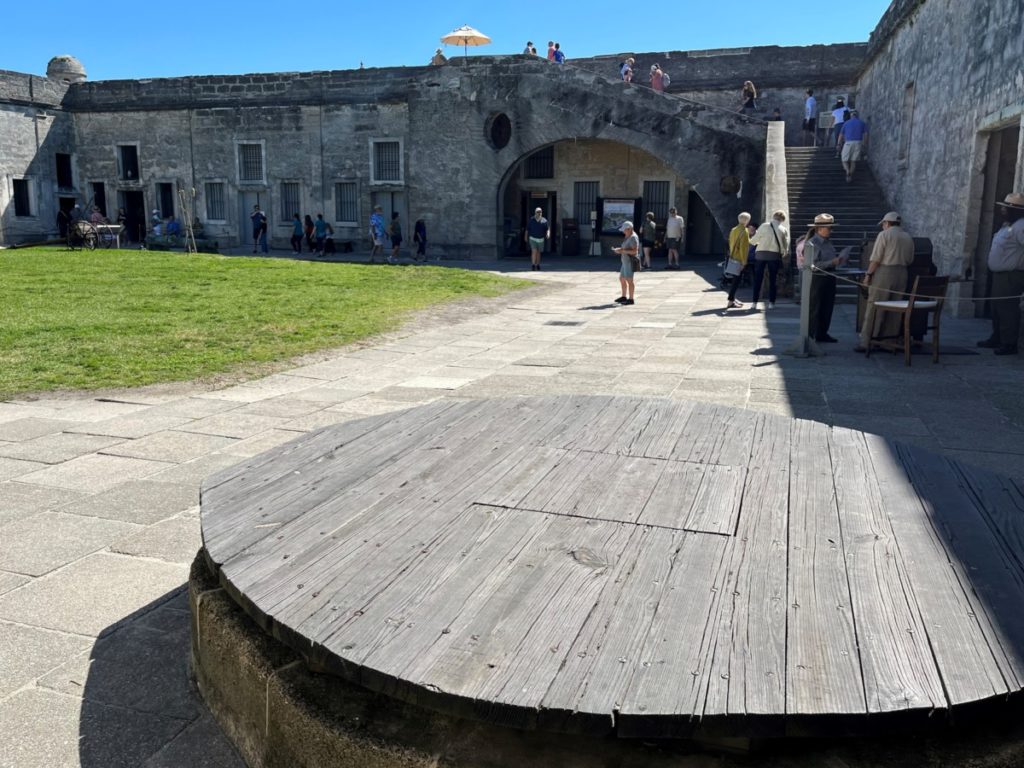
The Gun Deck
The gun deck above held 70 cannons at one time. I could better see the four bastions that created a star shape. Each bastion has a name: San Pedro, San Carlos, San Augustin, and San Pablo. Only the San Carlos watchtower had a bell that the sentry could ring to raise an alarm.
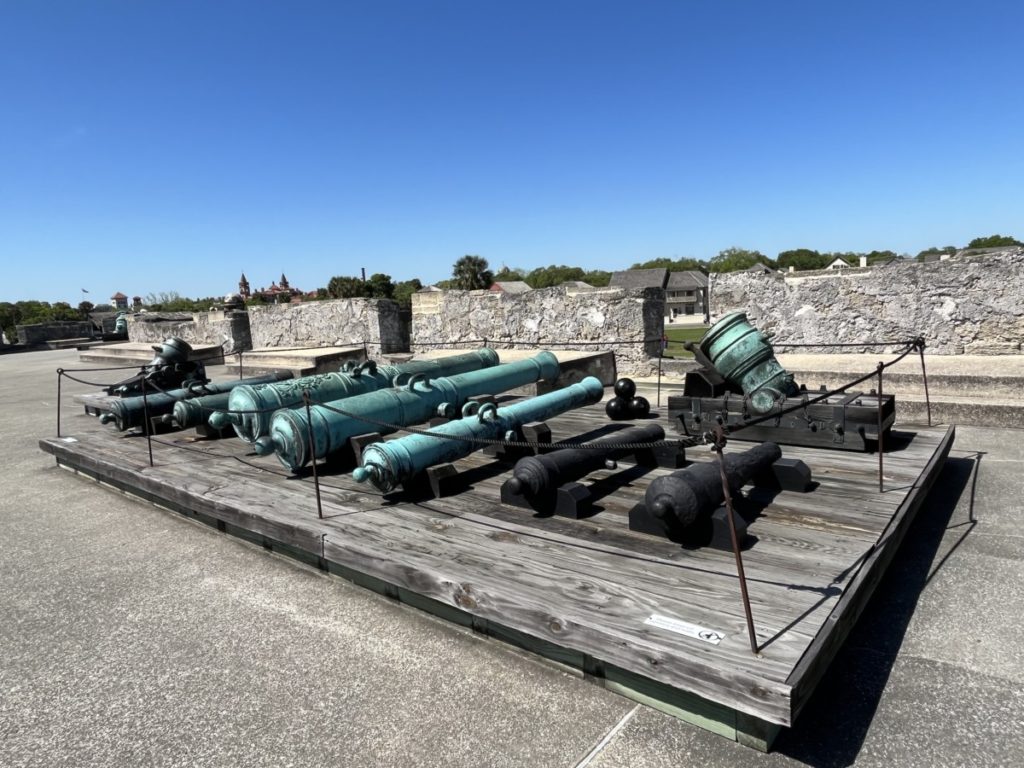
In addition to seeing the bastions and cannons, I got a better look at the area around the Castillo which served as St. Augustine’s first golf course. According to an NPS video, the St. Augustine Golf Club created three fairways forming a triangle around the fort in 1895. Played three times, golfers completed a 9-hole course. The club closed in 1934.
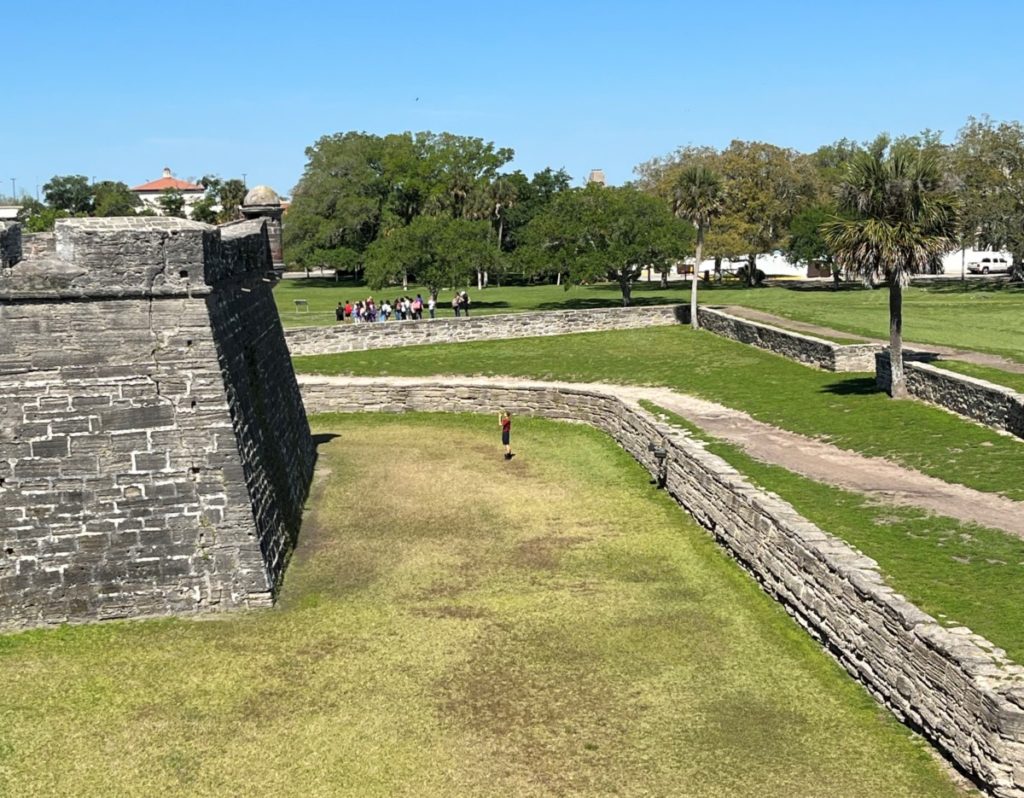
For more information about Castillo de San Marcos, visit the NPS website here.
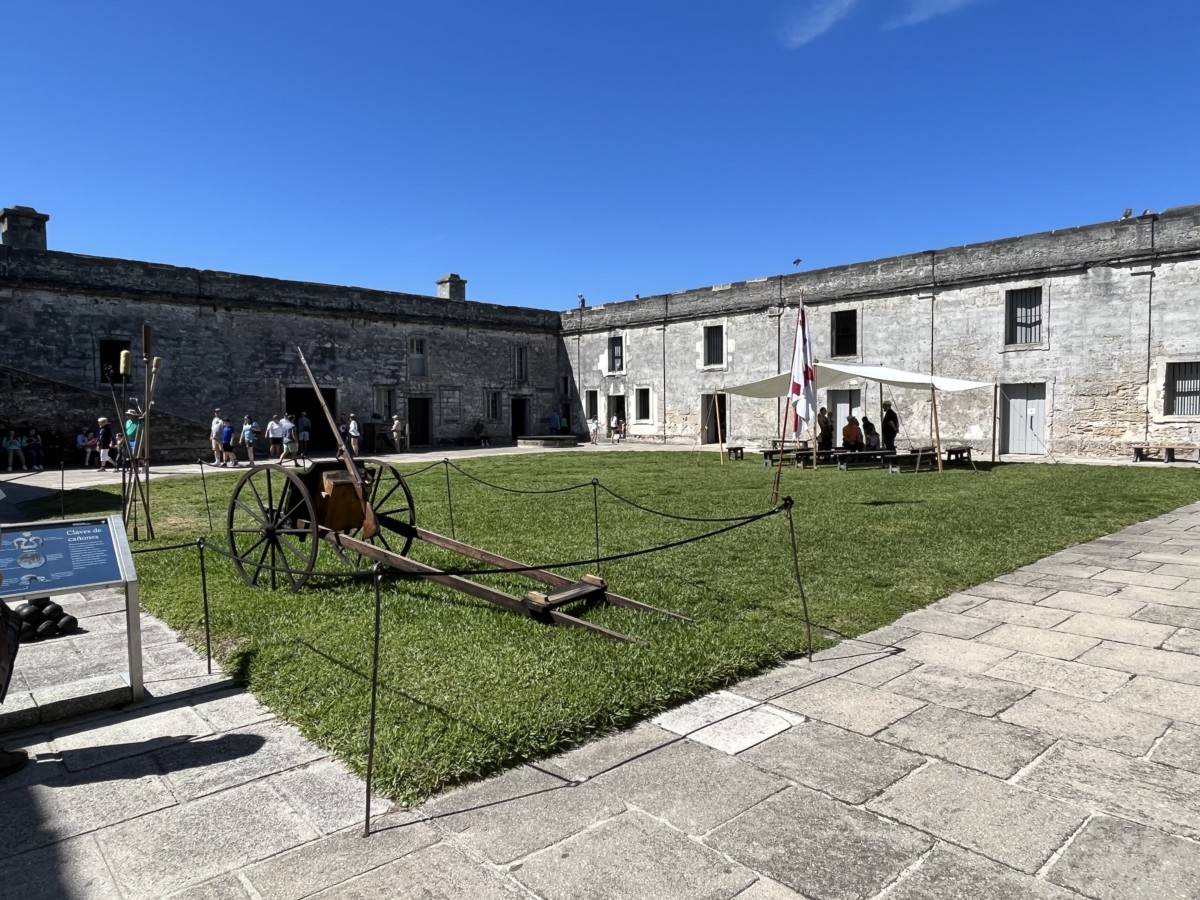
Pingback: St. Augustine Travel Guide • Finding Family Adventures